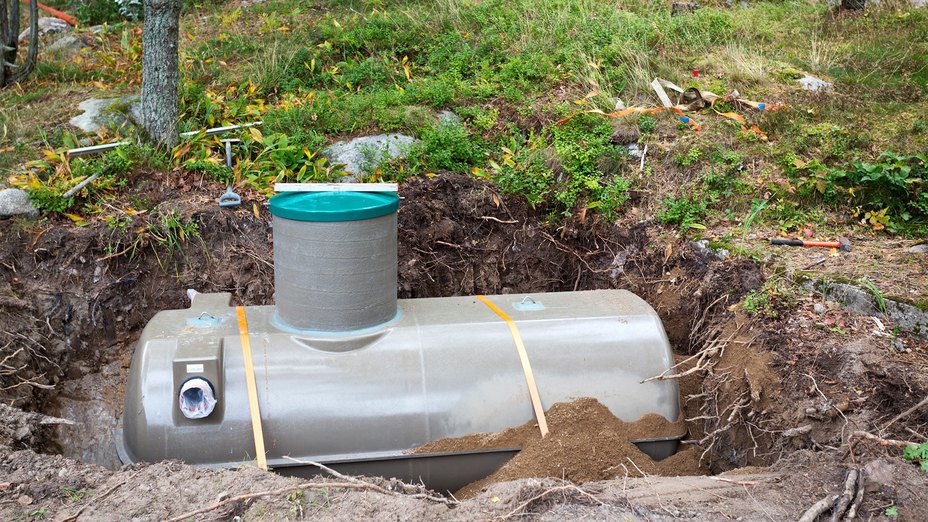
If you’re planning a new home or upgrading your existing wastewater system, one of the most common questions is: how long does it take to install a septic tank? Understanding the timeline for septic installation helps you plan construction schedules, inspections, and plumbing connections. A properly installed septic system is key for your home’s drainage, sanitation, and long-term maintenance.
The duration of the installation depends on several factors including soil conditions, the type of septic tank, the complexity of drainfield installation, and weather conditions.
In this guide, we’ll break down the installation process, provide a typical timeline, and share tips for a smooth septic installation.
Septic Tank Installation
1. Soil Testing and Site Preparation
Before starting, soil testing is essential. Professionals evaluate the soil type, drainage capacity, and suitability for a leach field. Soil conditions directly influence how long the installation process takes.
Sandy soil is easier to work with and drains well, while clay-heavy or rocky soil may slow excavation and grading. The site must be properly prepared to ensure that wastewater flows correctly and the septic system functions efficiently.
2. Choosing the Right Tank
Septic tanks come in various materials. Plastic tanks are lightweight, easier to transport, and generally quicker to install. Concrete tanks, on the other hand, are heavier, more durable, and require additional equipment for placement.
While concrete tanks might extend the installation timeline slightly, they often last longer and reduce the need for early replacement or frequent maintenance.
3. Drainfield Installation
The drainfield or leach field is a vital part of your septic system. It disperses wastewater into the soil for natural filtration.
Proper drainfield installation involves excavation, leveling, pipe placement, and adding gravel or other materials. Mistakes in this part of the installation process can lead to slow drains, backups, or costly septic repair.
4. Weather Conditions
Weather conditions can impact how long the installation takes. Heavy rain, frozen ground, or extreme heat can delay excavation, tank placement, and plumbing connections.
Experienced installers plan around weather conditions to prevent delays and ensure the septic system operates correctly from day one.
Typical Septic Installation Timeline
For most residential septic systems, a standard installation takes about two weeks under ideal conditions. A general timeline is as follows:
Day 1–2: Site assessment, excavation, and preparation
Day 3–5: Soil testing and grading
Day 6–9: Tank delivery and installation of the septic tank
Day 10–12: Drainfield installation and pipe connections
Day 13–14: Final inspections, backfilling, and system startup
Keep in mind that this timeline may vary. Complicated sites, unusual soil conditions, or delays in permits can extend the installation process. Simple, accessible sites may take less time.
Professional Septic Installation Services
Hiring a professional is highly recommended for septic installation. Experts ensure compliance with local regulations, proper plumbing connections, and correct drainfield installation. Professional installers also provide:
- System inspections and testing to verify everything is functioning correctly.
- Recommendations for long-term maintenance and care
- Safe handling of heavy concrete tanks or other large equipment
- Guidance on preventing future septic repair issues
Professional installation reduces the risk of costly problems, protects your home, and extends the life of your septic tank.
Tips for a Smooth Septic Installation
To ensure your septic installation goes as planned:
- Schedule soil testing well in advance
- Choose the appropriate tank type (plastic tanks or concrete tanks)
- Ensure the drainfield installation follows proper standards for your soil and site conditions
- Plan around weather conditions to avoid delays
- Maintain regular inspections and pumping after installation to prolong your septic system’s lifespan
Signs Your Septic System Needs Attention
Even with a professional installation, every septic system requires ongoing care. Watch for warning signs that your system may need repair or maintenance:
- Slow drains in sinks, tubs, and toilets
- Foul odors around the leach field or septic tank
- Pooling water near your system
- Frequent backups or plumbing issues
Early detection of these signs helps prevent extensive damage and expensive repairs.
Maintenance and Replacement
Regular maintenance is essential to keep your septic system working efficiently. Depending on use, most systems need pumping every 2–3 years. Replacement of tanks or drainfield components may be necessary over time, especially if the system is older or damaged. Maintaining proper care ensures your home’s wastewater system continues to function safely and avoids emergency septic repair situations.
So, how long does it take to install a septic tank? For most residential installations, the process typically takes about two weeks, depending on soil, tank type, drainfield installation, and weather conditions. Proper planning, professional installation, and ongoing maintenance are key to a reliable, long-lasting septic system.
Investing in Upfront professionals can ensure your system complies with regulations, works efficiently, and avoids costly repairs or early septic tank replacement. Whether you are installing a septic, maintaining an existing system, or planning for future replacement, understanding the timeline and factors involved helps you make informed decisions and protects your home.
